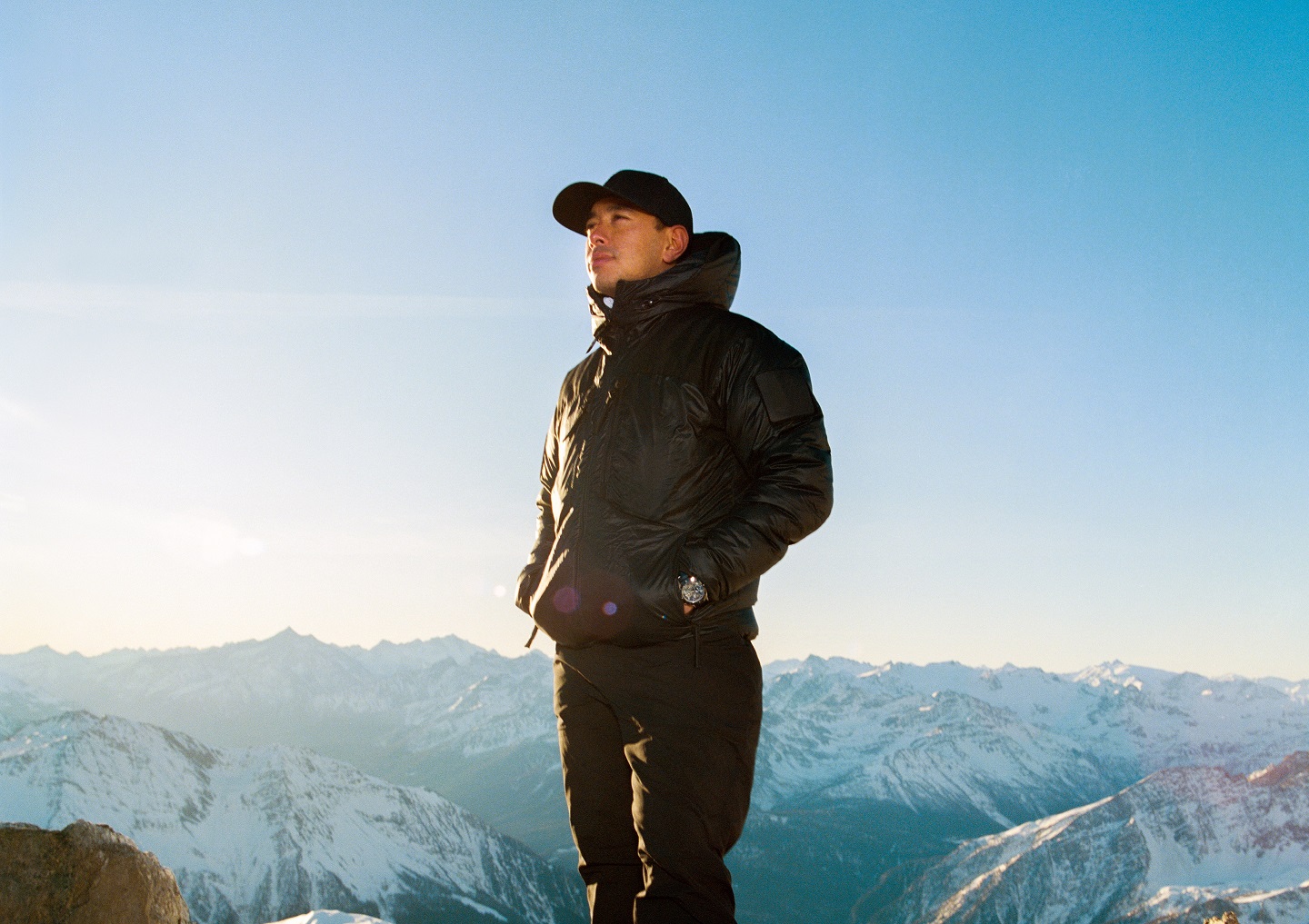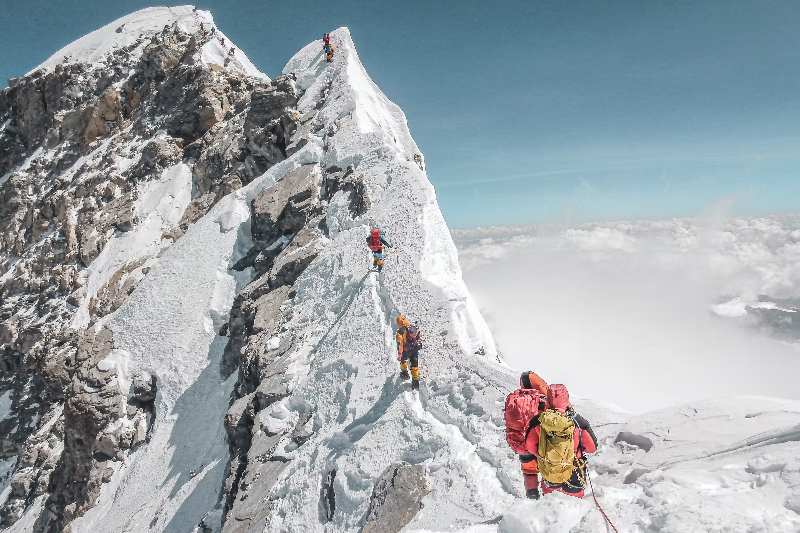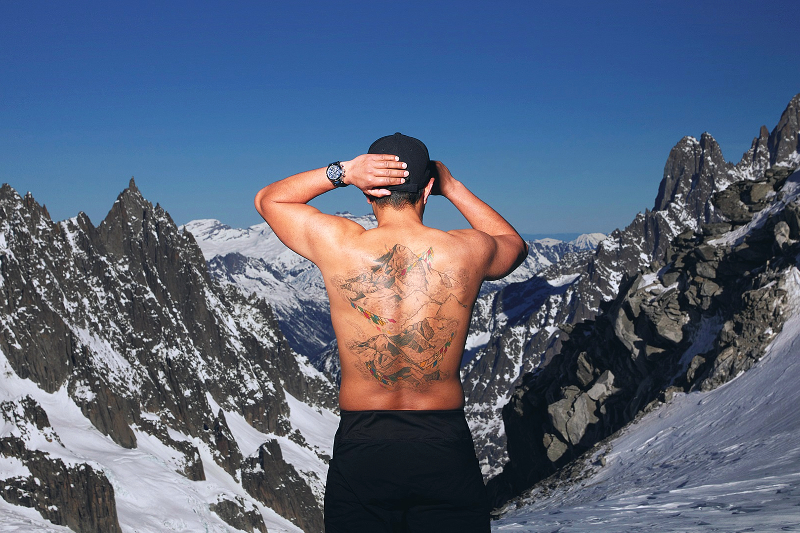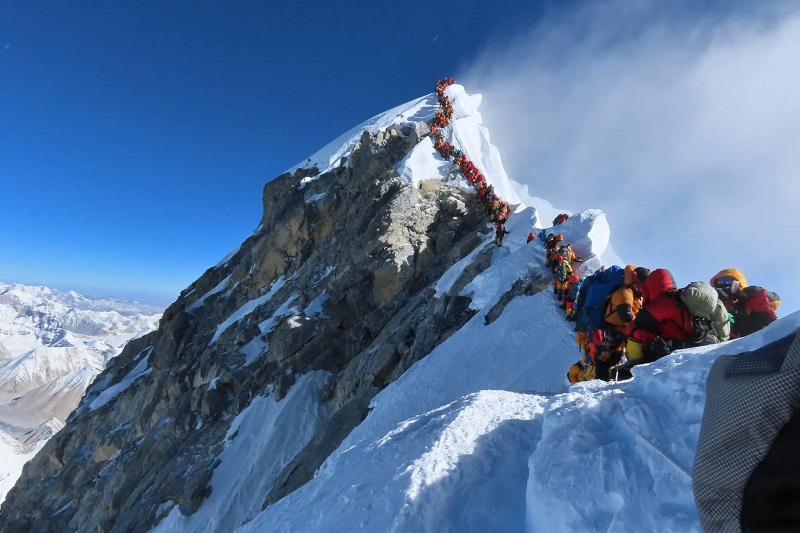
Purja has learnt many lessons from his colourful careers as soldier and mountaineer but the most valuable is that humility is of paramount importance and Mother Nature always wins (Photo: Montblanc)
"Oh hello, it is so nice to see you,” says British-Nepali mountaineer Nirmal Purja when we meet, his voice filled with so much enthusiasm I am caught by surprise. Have we met before only to have forgotten about it? There is momentary panic before the realisation hits that Purja’s effusiveness is a part of his personality, and he would be as warm with a stranger as he is with an old friend.
Purja, Montblanc’s newest Mark Maker, gained international fame in recent years as a multiple-record-breaking mountaineer. He is celebrated for having climbed all 14 eight-thousanders (mountain peaks above 8,000m) in a record time of six months and six days with the aid of bottled oxygen. He was also the first to reach the summits of Mount Everest, Lhotse and Makalu within 48 hours and last year, along with a team of nine other Nepalese mountaineers, completed the first-ever winter ascent of the treacherous K2.
Although more at home in the mountains, Purja looked rather comfortable at the Watches and Wonders fair in Geneva last month. He is there for the launch of a new timepiece in Montblanc’s 1858 collection, which is custom-designed for extreme explorations such as those Purja undertakes. For the interview, Purja is wearing the 1858 Geosphere Chronograph 0 Oxygen LE290, which he is more than happy to let me try on. “It is beautiful,” he says, adjusting the strap on my much-smaller wrist. “When I am wearing it, I cannot stop looking at it.” Purja will be wearing the timepiece on his sixth ascent of Everest later this month.
2022_03_17_montblanc_pr_stills_3508x2480px_03.jpg

Unexpected start
Although Nepal is most often associated with the cold, mountainous region of the Himalayas, there are municipalities that are flat and hot, too, like where our intrepid explorer comes from. “I grew up in the flattest and hottest part of Nepal, so I actually never saw any mountains as a child,” Purja laughs. “I found climbing very late in life. I was 30 when I started mountaineering and became a professional only in 2019, when I was 37! I want to tell everyone that it is never too late to start anything new in life, and I am proof of this.”
The heights Purja aimed to scale were simply the standards set by his older brothers, trained Gurkhas who stood out as beacons of inspiration and hope for the family. The Purjas come from humble beginnings, and being part of this elite group of soldiers was a great financial boon. Purja is the baby of the family, and his older brothers funded his education at an English-speaking boarding school. While this was a huge opportunity for him, it came with challenges — Purja was just five years old when he was enrolled at the school and had to do far more growing up than expected of a child that age.
He excelled at kickboxing, which proved to be a valuable weapon when standing up against school bullies. Young Purja proved to be unusually strong and fit for his age and it was this factor — plus encouragement from his brothers — that helped him during the notoriously tough selection process to become a Gurkha. To this day, Gurkhas are regarded as among of the most well-trained, fearless and skilful soldiers in the world.
Once this goal was achieved, Purja set his sights on the British Royal Navy’s Special Boat Service, eventually becoming the first Gurkha to join the elite unit. He served in the SBS as a cold-weather warfare specialist. Strict regulations prohibit Purja from discussing his work with the SBS, but he has previously said he was part of all the theatres of war that Britain was involved in, and was even wounded after taking a sniper bullet that struck the butt of his rifle, narrowly missing his neck.
everest_nimsdai.jpg

But as a Nepali, scaling Everest was inevitable. He began his conquest of the Himalayas by reaching the summit of Lobuche East (6,119m) without any previous mountaineering experience. Two years later, he made his first ascent of an eight-thousander by summiting Dhaulagiri (8,167m) during a return trip of only 15 days. On May 13, 2016, Purja summited Mount Everest, the world’s tallest peak, for the first time, his second eight-thousander. The following year, he led an expedition of 13 Gurkhas to summit Everest to mark 200 years of Gurkha service in the British Army, and would go on to be appointed a Member of the Order of the British Empire by Queen Elizabeth for his outstanding achievements in high altitude mountaineering.
In 2019, Purja opted for early retirement from the navy — giving up a substantial pension in the process — to become a professional in the sport. It was not a decision he made lightly but it was something he says he simply had to do. “Mountains are my passion. It is where I am meant to be.”
One would think that having literally reached the pinnacle of the sport would have marked the end of his goal-setting as far as mountaineering goes — having literally reached the top of the world, there were no more higher targets.
But that’s not how he saw it.
Beyond possible
In his career with the Gurkhas and as an alpinist, Purja soon realised one thing — the Nepali Sherpas managed all the activities in the mountains but rarely received the credit they deserved. He also noticed that climate change was affecting the mountains that he so loved — certain areas where he could once melt snow to drink were now dry, requiring mountaineers to carry gallons of water instead.
“I believe that the Earth is our home and I have seen a huge change in the Himalayas with my own eyes,” Purja shares. “Glaciers are melting, there is no more snow on some of the mountains and it’s now all rocky. This decade is so important for the whole of the human race to make a difference if we want to survive on this planet.”
He wanted to do something dramatic to make a statement, and climbing one mountain wouldn’t be enough. In 2019, Purja decided he would scale all 14 eight-thousanders in record time. More than 40 mountaineers had already achieved this and the time to beat was just under eight years, the world record. His proposal? To achieve the feat in seven months.
“It is impossible, I was told so many times! So, I named the expedition Project Possible,” Purja recalls. He was right: he scaled the peaks in an unimaginable six months and six days. The Netflix documentary 14 Peaks chronicles his journey and how close to impossible it was.
2022_03_17_montblanc_socialstatic_1920x1080px_13.jpg

During our interview, the conversation meanders towards tattoos and the massive one on his back of all 14 peaks, done before his ascent. Unusually, the ink used contains DNA from his brothers, mother and wife. Its called an Everance tattoo and for him, is almost talismanic. “I knew if I pushed too much while climbing, I might die,” he told National Geographic in a 2019 article, published just ahead of his climb. “And I needed to be reminded I had to get back home for the family. I was looking after my mum and dad at the time, and I’m a married man. I had so much responsibility. I didn’t want to make a stupid mistake on the mountains.”
Indeed. By the time Project Possible came to be, he was married to the exquisitely beautiful and articulate Suchi, who understood that holding her husband back from this ostensibly dangerous mission would be as detrimental to him as forbidding him to go. Herself the daughter of a Gurkha, she gave him her blessings as Purja’s objectives resonated with her.
The next obstacle to surmount was the cost. The expedition wasn’t investable no matter how noble its objectives, as Purja points out in 14 Peaks. He had to remortgage his home in order to fund the climb and once it began, recruited the project’s four other climbers — Mingma David Sherpa, Geljen Sherpa, Lakpa Dendi Sherpa and Gesman Tamang, vital characters in his mad plan who were as devoted to it as he was.
Project Possible changed him, Purja says. Scaling mountainous peaks is hardly about speed, and more about patience and tenacity, about embracing fear and how it saves you, about finding a source of strength deep within yourself. “Climbing mountains will help you find out who you are. You can fake it on land or on sea, but on the mountains, you can’t do that at all. You will really find out who you are and what you are capable of, which is of such importance. Who are you if you don’t know who you are?,” he muses.
nirmal_purja_project_possible.jpg

Project Possible became more successful than Purja could ever have anticipated, resulting in not just the Netflix documentary — which features a great deal of footage shot by Purja himself — but also a book titled Beyond Possible. “The power of the media I have for myself gives me the power to tell stories of the mountains without any interference or agenda,” he explains. “I can say what is right and wrong, and my bigger goal is to bring people together. For me, there is one race in the world, humans, and I can always see that in the mountains — up there, you are nothing but humans and no one cares how you are different, only how you are the same.”
It was during his Project Possible ascent of Everest that Purja captured the now-famous picture of a long queue to trek up the mountain. The global reaction was of shock and horror, sparking conversations about Everest having become just a climbing goal, and the dangers of overcrowding on the mountain. His take on it was very different. Refreshing, almost.
“People climb for their own reasons, for their own purpose. They are doing it because they take away something from that adventure, that experience. I don’t have any problem with people climbing Everest. People come for adventure. It’s a big mountain. Why only climb in spring; do it in autumn as well! Why take this route, when there are others? You can fit so many people on that mountain; it just has to be managed properly.”
Making one’s mark
It was famed alpinist Rheinhold Messner — also a Montblanc Mark Maker and who has an 1858 Geosphere named after him — who introduced the brand to Purja. Montblanc, whose own name and history are tied up in snowy mountain peaks, had already developed the 1858 Geosphere Chronograph 0 Oxygen LE290 and was looking for someone to put it to the ultimate test on a trek up Mount Everest.
It was the perfect match. By that time, Purja had already scaled K2 in winter and started the Nimsdai Foundation to give back to the mountain communities of his homeland by supporting educational, technological and capacity-building initiatives. (Nimsdai is a portmanteau of his nickname, Nims, and the Nepali word for brother, dai.)
“The big thing for me is I have to trust in the brand,” Purja says, absent-mindedly touching his watch. “There is only one Nimsdai in the world right now, and when they came up with the idea of this beautiful timepiece that I’m wearing right now, it is the first of its kind, too. More than that, it’s stunning! In any partnership there must be mutual respect. They are looking after me, they have been genuine with what I stand for, so it’s not full-on commercial stuff… I’m proud to be part of a partnership like this.”
This month, Purja will undertake an expedition to the summit of Mount Everest without supplemental oxygen while wearing the Montblanc 1858 Geosphere Chronograph 0 Oxygen LE290. Although not every one of the 290 limited-edition timepieces will make it up the peak, its owners will always consider their watch as a reminder that nothing is impossible. “I think the big thing here is that we all have our own mountains in life to climb. It’s about how we climb them — with determination, perseverance, optimism, but also, working hard and being dedicated and fully committed,” he says.
Purja has learnt many lessons from his colourful careers as soldier and mountaineer but the most valuable is that humility is of paramount importance and Mother Nature always wins.
But his bigger message, for those climbing their own mountains, whether physical or metaphorical, is this: “I think, sometimes, we forget to live. What I mean by that is we worry about so many little things even when we have so much. We press a button and electricity comes, hot water, whatever. And still, we are unhappy! But in the mountains, when you are living a simpler life, you are happy. I am, anyway, which proves to me that you don’t need a lot to be truly happy. You cannot be in the mountains every day, but you can be there in your mind. Go down to what is most important to survive, and happiness will be yours.”
This article first appeared on May 2, 2022 in The Edge Malaysia.


